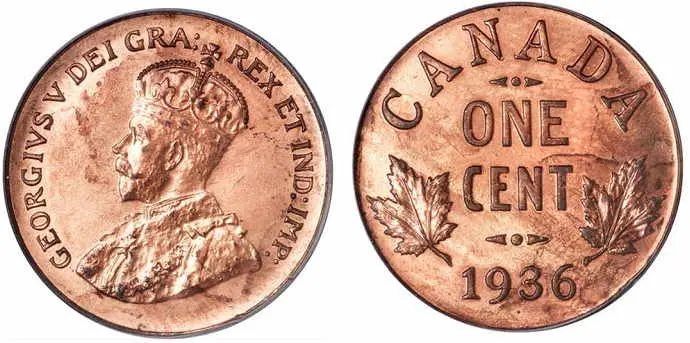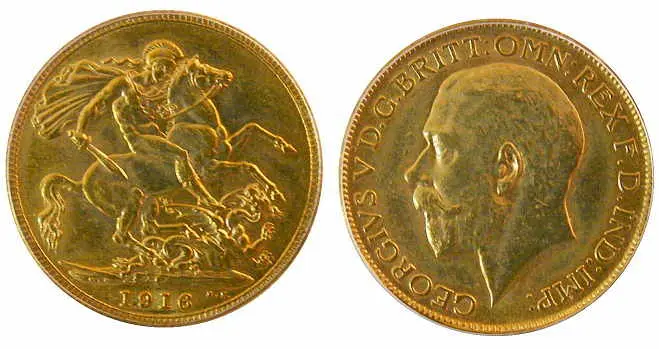Ed. note: This article is periodically updated to reflect the current price of most valuable coins.
In Coleccionistas de Monedas, we fight against the misinformation surrounding the world of coins on the Internet. For this reason, our articles are entirely written by people, not AI or other automated systems. Additionally, we link to all sources and references for coin prices, with the goal of providing you with real, updated, and reliable information.
How do we verify coin prices and values?
At Coleccionistas de Monedas, we are committed to providing accurate, trustworthy, and well-sourced numismatic information. We understand that articles about coin values can influence important financial decisions, which is why we apply a clear and rigorous methodology to estimate prices.
Sources used
- PCGS Price Guide: The official pricing guide from the Professional Coin Grading Service.
- NGC Price Guide: Updated valuation system from the Numismatic Guaranty Company.
- Heritage Auctions: Database of real auction sale prices.
- Red Book: Printed guidebook with historical pricing by grade.
- eBay Sold Listings: Only completed sales are considered, not asking prices.
Validation process
- Price review by condition grade using standard scales (MS, AU, XF, VF).
- Verification of varieties and errors through multiple data sources.
- Expert consultation when prices significantly deviate from the norm.
- Regular updates to reflect current market trends.
Important disclaimer
The values presented in this article are for reference purposes only. Final coin prices can vary significantly depending on authenticity, grade, and selling context. We strongly recommend having your coin certified by a professional service such as PCGS or NGC before selling or purchasing it as an investment.
Coin collectors look at coins and see more than just money. For collectors, they are works of art that express the culture and celebrate a nation’s milestones. Just like you, each of these coins has a story to tell.
Beyond the gold and silver exterior, collecting coins fill life with interest and inspiration. People preserve these coins to serve as keepsakes and memorials. Some even keep them as talismans. So, for anyone interested enough, this pastime can quickly become a passion.

JUMP TO SECTION
The Value of Canadian coins
In 2019, the George Hans Cook Collection of Canadian Coinage auction presented a complete collection of Canadian coins ever assembled. The auction offered some of the most significant and rarest Canadian coins in existence.
Here is the list of the most rare and valuable Canadian Coins:
Canadian Coins worth money chart
| Coin | Mint Year | PCGS Grade | Price (CAD) | Comments |
|---|---|---|---|---|
| 1 dollar | 1911 | SP-64 | $735,000 | Pattern |
| 1 cent | 1936 | MS-65 | $415,272 | Dot |
| 50 cents | 1921 | MS-66 | $319,890 | Next top value: $159,945 |
| 50 cents | 1890 | MS-65 | $261,000 | Type 1890H |
| Gold Sovereign | 1916 | MS-66 | $2,500 | Type 196C |
#1 – 1911 One Dollar piece (CAD 735,000) – PCGS SP-64 Pattern

There are only two silver examples known of this Canadian coin dollar, with only one of these in private hands. Proof Positive Coins Ltd. and Gatewest Coins Ltd. purchased the other on August 15 at the ANA World’s Fair of Money in Chicago from the George Hans Cook Collection. In January 2003, at a previous auction sale of this coin, a $1 Canadian coin was sold for approximately CAD 1,066,000.
#2 – 1936 one cent (CAD 415,272) – Dot PCGS SP-65

The only three known examples of this coin were formerly held for 35 years by John Jay Pittman, from 1961 to 1996. George Cook acquired the highest grade one (SP-65) in 2010. He then sold it at the ANA World’s Fair of Money in Chicago for an auction held by Heritage Auctions. The same coin was sold in January 2010 for CAD 410,000 from the Belzberg Collection.
#3 – 1921 50 cent piece (CAD 319,890) – PCGS MS-66

These are the “King of Canadian Coins.” It is believed there remains fewer than 200 fifty cent coins from this batch. Two coins (MS-66 and MS-63+) were sold at the ANA World’s Fair of Money for CAD 159,945. On November 22nd, they sold another at the Scribner Auction Ltd. auction for CAD 65,550.
#4 – 1890H 50 cent (CAD 261,000) – PCGS/ICCS MS-65

Only three coins of this batch are in MS condition. Among the Victoria fifty cents in high-grade condition, the 1890H 50 cents is the rarest, and the Canadian Numismatic Company sold it during the Public Torex Auction. Another coin (MS-64), a survivor of the renowned Heaton Hoard discovered in 1974-1974, was sold in January 2010 by the Heritage Auctions for CAD 157,000.
#5 – 1916C Gold Sovereign (CAD 207,636) – PCGS MS-66

In 1916, 6,111 of these Canadian gold coins were produced. Four were sold at auction in 2019. Then, on January 7, 2019, an NGC MS-61 sold for CAD 30,324.00. A PCGS AU-55 went for CAD 28,750.00 on March 22, 2019. On August 15, 2019, a PCGS MS-66 was sold CAD 207,636.00. Lastly, on September 15, 2019, a PCGS MS-63 was won for CAD 38,332.80.
How Canadian Currency Evolved
Just like the history of settlement in Canada, the history of money in Canada sprung from its indigenous roots. European influences infused with indigenous roots created a unique system that unifies the country from coast to coast.
Before the arrival of the Europeans, indigenous Canadians already utilized the barter system. They exchanged valued furs, copper, and other precious metal-made objects. During the 1600s to 1800s, indigenous Canadians had wampum belts, which consisted of tubular shell beads of white and dark purple. Each bead varied in size at around two inches and were strung together after polishing, cleaning, and molding each bead. Initially, these belts were ceremoniously presented to warriors, given as gifts, or offered to mark treaties. However, these beads became a part of a monetary system with the arrival of the Europeans. Upon seeing its significance to the natives, Europeans began mass-producing wampum in workshops by the mid-1800s.
France had a significant role in the evolution of currency in Canada. New France issued the first paper money in the form of playing cards, due to a lack of coins. In 1685, these cards were released for public consumption after the governor cut and signed each. These were exchanged with cash whenever a French ship arrived. However, the card system confused people, so it ended the following year.
US dollars and Spanish coins were also commonly traded during the early days of Canada. Up to this day, US dollars are still widely used, with many stores having cash registers with USD settings to easily accept US dollars. Spanish coins were especially prevalent in Newfoundland. Before it joined the Confederacy, the Newfoundland dollar was more of a descendant of the Spanish dollar than the British pound sterling. Because of this, the Newfoundland dollar was valued slightly higher than the Canadian dollar.
Once adopted in 1841, the Canadian pound, which was equal to the US dollar, circulated alongside wampum belts. Each Canadian pound subdivided into 20 shillings, each worth 12 pence – much like the pound sterling. However, in 1857, the decision to adopt the decimal system caused Canadian pound circulation to stop. The Canadian dollar then made its debut the year after. This decision was made mostly due to increasing trade activities with the United States.
Not all of the coins we currently know surfaced with the adoption of the Canadian dollar. The dime came in 1858, followed by the quarter in 1870. The Royal Canadian Mint issued the first Canadian-minted coins in 1908. In 1920, they introduced the penny and the nickel in 1922. In the year 1987, they minted the loonie and followed it with the toonie in 1996. These two pieces replaced the $1 and $2 banknotes. In 2012, they took the penny out of circulation. In 1858, Canadian notes began circulating with $1 bills. By 1887, $2, $50, $500, and $1,000 bills were in circulation, and the $20 bill followed in 1934.
Different Types of Canadian coins that are worth money
#1 – Gold Coins
They mint Gold coins in small numbers, which is why these coins are favorites among collectors. Gold is nearly impossible to destroy as it cannot rust, tarnish or decay. Today, the highest standard of gold available in the world is 99.999% pure gold.
#2 – Silver Canadian Coins
For millennia, people have used silver to store wealth and pay debts. Even now, people still use silver coins as legal tender. They do not quickly decay and require almost no maintenance. They are also durable, pliable, reflective of light and can endure extreme temperatures.
#3 – Platinum Coins
Platinum is a natural element, a precious silvery-white metal that shares many of gold’s properties. Even if it resembles silver, platinum does not tarnish over time. One of the world’s most famous platinum coin is the Canadian Platinum Maple Leaf bullion coin minted at 99.95% platinum purity.
#4 – Innovative Coins
With technology, collectors nowadays can find innovative, unique designs and effects on coins such as multiple colors, holograms, crystal elements and gem inserts. Some coins also have high relief, with a design embossed high above the background. There are also mint coins with a jewel-like finish on them.
Things to Consider when Collecting Coins
With collecting coins, you would have to make arrangements with dealers, who can give you advice and information. As they may be busy with other customers, it is essential to repay their time with a little patronage. It will show them how sincere you are about collecting.
You should also be careful when buying and selling coins. As with any business, this type of investment can have its benefits and consequences. So, make sure that you are knowledgeable enough about the trade.
What you need to remember most is that you should buy what you like, buy what you can afford, and buy what you consider reasonably priced. So, enjoy your coins without spending too much on them. It is always better to own one high-quality coin than owning many mediocre ones.
Know the Worth of your Canadian Coins
Grading a coin is a complex subject where even seasoned experts can disagree. With a basic grading guide, collectors can identify the value of coins. For beginners, practice grading coins and compare your results with those made by experienced graders.
To help you in your grading, observe the following:
- Good (4) – there is wear, has visible designs, but no visible details.
- Very Good (8) – the coin is well-worn but contains a few fine details.
- Fine (12) – the coin’s design and lettering are visible but show signs of wear.
- Very Fine (20) – the coin has uniform light wear, but has lettering and sharp, significant elements.
- Extremely Fine (40) – there is slight wear to the coin, it has sharp details, some luster remains.
- About Uncirculated (50) – the coin has traces of wear on all surfaces, but at least 50 percent of the original luster remains.
With mint state coins, you base their grading on the quality of their strike, condition, and luster.
- MS-60 – in mint condition showing some bag marks and edge nicks.
- MS-63 – in mint condition with few surface marks and most luster remaining.
- MS-65 – in almost perfect condition with minor flaws that appear after an examination.
By now, you can finally see how fun and fulfilling coin collecting can be. Worldwide, people continuously collect coins for their rarity, historical significance and craftsmanship. Be part of this legacy now!
References and sources

